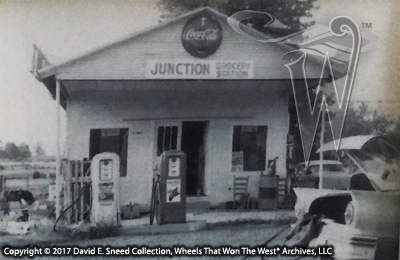That store was a connection to people, events, and social interactions that were part of the close, friendly feel of the community. It was a place where people were down-to-earth and kids could be kids. As such, it holds a number of memories for me. I remember when gas was 27 cents per gallon, water and compressed air were free for the asking, soda was a dime and came in a 10-ounce glass bottle (3 cents of which was refunded upon return of the bottle), someone always pumped your gas while you waited and, many times, checked your vehicle's oil - just as a courtesy. 'Those were the days' as the old song says. Of course, back then, we didn't have many of the modern conveniences that we do today. Reinforcing that point, my sister and I were the forerunners of a TV remote control for our family. We had a total of three free channels (sometimes four if the local PBS signal was clear enough). It all came in through a metal antenna to our black and white, small-screen TV. Cell phones and personal computers were non-existent, cars often had no seat belts, and phone lines were shared resources referred to as a 'party line.' Somehow, we survived and each of us, at one time or another, has probably wished for elements of the good old days to be back again.
 |
| This old country store holds a lot of fond memories from my childhood. |
 |
| With or without paint, this original Winona Sheep Bed wagon would be a great find and rare addition to any collection today. |
In the past several years, I've added a number of very special pieces to our collection and spent far less than others competing for the few-and-far-between, premium specimens (which are almost assuredly twentieth century pieces). As collectors, we have to get past the point where we only see one element of the vehicle. The most obvious thing that most people notice is the 'condition' of the piece. Understandably, everyone wants the highest quality and so do I. As I've already mentioned, though, the pieces that are clearly extraordinary are the most likely to attract the most attention of others. The good news is that to successfully compete against those with deeper pockets, sometimes all you need to do is look around you. What do I mean by that?
Okay, I'll quit beating around the bush and ask you, 'What are the features you look for in an old vehicle?' From my perspective, there are a number of important elements to review; many of which I've covered in our Borrowed Time book and I've also shared in several blogs. You can put most of that criteria, though, in the acronym - CUP. For me, C-U-P stands for Condition, Uniqueness, and Provenance. When all three of these are optimized, you're likely to have a truly impressive survivor. That said, I have some extremely unique pieces that are not in mint condition. Like most one hundred to one hundred fifty year old artifacts, they have some age spots. Yet, they still carry significant value. How? Well, they may have a great historical background, time frame of manufacture, unique construction features, be one of a select few from a well-known maker, or some other rare aspect of historical provenance. The most important thing I'm getting to here is the need to train ourselves to recognize opportunity when it comes along.
 |
| This Texas town scene shows a number of wagon brands including Peter Schuttler, Racine, Fort Smith, and Springfield. It's part of a vast story highlighting fierce competition among wagon makers. |
These days, most of us have more access to information about these old transports than ever before. Unfortunately, though, we tend to get distracted by just one feature in collecting - the Condition (good or bad). In other words, we don't really see the individual tree because we're looking too broadly at the whole forest. If I could give just one piece of advice to new or long-time collectors/enthusiasts, it would be to quit wishing for the prices of yesterday and start looking for the treasures that are going unnoticed today. They are out there and I've been extremely fortunate to come across my share again and again. Over the years, I've had countless calls and emails asking for insights and recommendations about a particular antique vehicle. By passing along my own observations, it's been a blessing to help so many improve their collections while also preserving the maximum amount of history for future generations.
I have a great deal more that I can share on this topic but will wait for a later date to dive into the details. In the meantime, I'd encourage any that don't have a methodical evaluation process to consider broadening the search. Acronyms like C-U-P can be a good reminder to be even more diligent when reviewing a set of wheels - no matter the Condition.
Please Note: As with each of our blog writings, all imagery and text is copyrighted with All Rights Reserved. The material may not be broadcast, published, rewritten, or redistributed without prior written permission from David E. Sneed, Wheels That Won The West® Archives, LLC